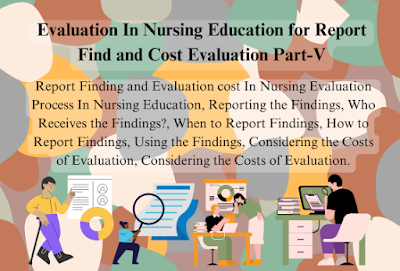Reporting the Findings
In the nursing education evaluation process, it’s crucial to communicate the results effectively to relevant stakeholders. This includes considering the timing, method, and recipients of the findings to ensure that they are used effectively.
Who Receives the Findings?
Before reporting the findings, the evaluator must identify the intended audience. Typically, both the individuals or groups being evaluated and those who requested the evaluation receive the results. Confidentiality is key—only those designated to receive the report should access it, and unnecessary background information should be discarded after the report is completed.
It’s also essential to tailor the report to the audience. For example, students may only need to know their test grade without requiring a deep understanding of the complex grading methods or item analysis used.
When to Report Findings
Timing plays a critical role in maintaining engagement. Recipients are often eager to know the results, and delaying the report can result in frustration or loss of interest. In academic settings, students usually prefer prompt feedback on test results, and delays can cause anxiety. In contrast, administrative reports may be timed to align with the end of the semester or other key dates.
How to Report Findings
Findings can be communicated through various formats—written or oral, formal or informal. Informal evaluations, such as discussing a student’s clinical performance without structured criteria, are less effective and may lead to ambiguity and unfairness. A more robust approach involves statistical analysis and a detailed formal report, which can be used to back up decisions and ensure fairness.
Using the Findings
Using evaluation findings is a shared responsibility between the evaluator and those being evaluated. To maximize the value of the evaluation, strategic planning is essential. According to Sanders and Sullies (2006), proper follow-up on evaluation findings is necessary to avoid wasting resources. The four key strategies to consider are purpose, people, planning, and packaging:
- Purpose: Clearly define the purpose of the evaluation, whether for accreditation, curriculum development, or student assessment.
- People: Engage all stakeholders in the process, including students and faculty.
- Planning: Plan the activities and how the findings will be disseminated.
- Packaging: Present the evaluation report in an accessible format, incorporating visual aids like graphs for clarity.
Improvement in Evaluation in Nursing Education
For evaluation to drive improvement in nursing education, it should be used to revise curricula, improve instructional methods, and demonstrate program effectiveness. Consider these strategies to enhance the use of evaluation findings:
- Involve those impacted by the evaluation in the design of the evaluation plan.
- Engage all participants in the evaluation process, encouraging self-evaluation and peer review.
- Report findings in a timely manner to maintain relevance.
- Provide realistic, actionable recommendations.
- Allocate time for discussing the results through review sessions or workshops.
- Encourage recipients to propose alternatives and set goals for improvement.
- Handle sensitive findings with care and trust.
- Contextualize the findings to ensure they are meaningful to the recipients.
Considering the Costs of Evaluation
Evaluation can be a costly process, involving time, resources, and potential program changes. It’s essential to weigh the costs against the expected benefits to ensure the evaluation is worth the investment. Key cost-related considerations include:
- Faculty time: How much time will instructors spend developing and administering evaluation tools, interpreting data, and reporting results?
- Student time: Will the evaluation require excessive time from students, potentially detracting from their learning?
- Complexity: Are complex evaluation methods worth the investment in terms of time and technology?
- Program impact: Will the results necessitate curriculum revisions, or will they impact student progression?
Building a Successful Evaluation Framework
Just as a builder wouldn’t construct a house without a blueprint, nursing educators need a well-thought-out evaluation framework. The framework guides the evaluation process, from choosing instruments to collecting and interpreting data. Effective instruments must be:
- Appropriate: Tailored to the evaluation’s purpose.
- Cost-effective: Reasonable in terms of time and resources.
- Time-efficient: Manageable within the constraints of the academic schedule.
- Valid and reliable: Capable of producing consistent and accurate results.
Finally, after conducting the evaluation, the findings must be applied to make meaningful improvements. Ignoring the results would render the entire process futile, akin to leaving a newly built house vacant.
By considering both the findings and the costs of the evaluation, nursing educators can ensure that their efforts lead to valuable insights and continuous improvement in nursing education.
